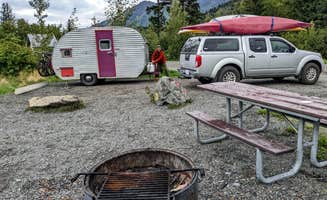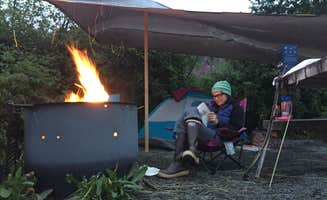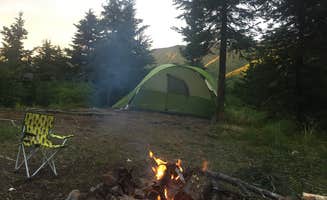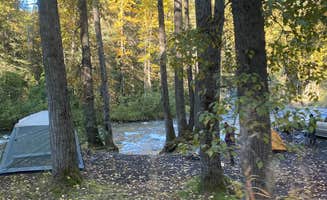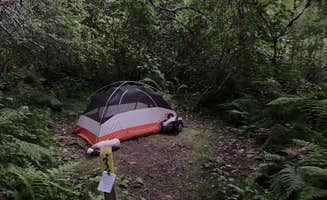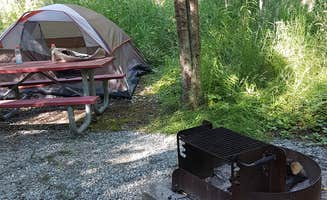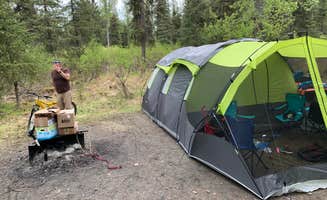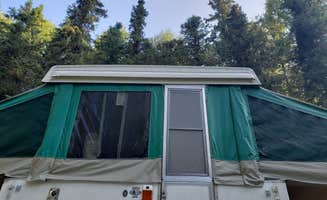Located along the Seward Highway between Anchorage and the Kenai Peninsula, Indian, Alaska offers accessible camping options from May through September. Most campgrounds close during winter months when temperatures drop significantly. Campgrounds in this area range from established facilities with amenities to primitive sites along forest service roads, with elevation changes affecting both temperature and scenery.
What to do
Biking trails for all levels: Bird Creek Campground provides easy access to the Bird to Gird bike trail. "Situated right along Bird Creek bike path this is a great place to stay if you love to ride your bike. Whale watching and fishing are also two things to help pass the time," notes Shadara W. about Bird Creek Campground.
Mountain hiking with wildlife viewing: The area offers multiple trails ranging from short walks to multi-day treks. "Many cool and unique hikes including one where you have to use a manual pulley thing to get across a huge river," shares Shannon C. about their experience at Bird Creek.
Fishing opportunities: Granite Creek runs along several campsites with small fish like Dolly Varden. A visitor at Granite Creek Campground explains: "Granite creek is a great stop in between Anchorage Alaska and anywhere else south... You can bring your choice of boat to fish or float in the lake."
What campers like
Proximity to Anchorage: Many campsites offer a wilderness experience without long travel times. "Far enough away but close enough to town if you feel the need to get back to the city," mentions Aimee H. about her stay at Bird Creek.
Mountain and water views: The combination of mountain scenery and water access creates unique camping spots. An Eagle River camper shares: "Great campground with paved roads. Lots are spread out well and it is fairly comfortable and quite. Multiple trails travel along the campground and the river," according to Andrew R. at Eagle River Campground.
Wildlife encounters: Visitors frequently spot local wildlife including eagles, moose, and sometimes bears. Aimee H. notes: "You get an amazing view of kenai mountains here and your typical Alaskan wildlife.. magpie, moose, eagle and sometimes bear."
What you should know
Seasonal considerations: Most campgrounds operate from May to September with limited or no services in off-season. "Bring extra blankets early in the season it gets pretty cold at these campgrounds," advises Tanya B. about Bertha Creek Campground.
Bear safety essentials: Multiple reviews mention bear activity in the area. "We ran into a large juvenile brown bear on the trail" is a common experience. Aimee explains: "I highly encourage bear safety. This includes keeping your camp clean, food in your car and carrying bear spray."
Weekend crowds: Popular sites fill quickly on summer weekends with Anchorage residents. "Get there early for a spot on the weekends. Sites are small for the most part, better for RVs or a small tent. Some traffic noise throughout," notes Liz S.
Tips for camping with families
Public use cabins for winter trips: Bird Creek offers cabin options for families wanting to experience Alaska's colder months. "We rented a cabin 95$ a night and took aprox 12 young ladies in the chilly month of November! Daring, I know! But state restrooms made sharing a bathroom easy," shares Aimee H. from Porcupine Campground.
Train noise considerations: The Alaska Railroad runs through some camping areas. "Train does run by at 6 am so it makes a great alarm clock. Quiet time ends at 6 am," explains Tanya B.
Kid-friendly activities: Several campgrounds have paved areas perfect for children's activities. "The paved loop offers good space for biking, throwing a ball or side walk chalk," notes a camper at Granite Creek.
Tips from RVers
Limited hookups available: Most campgrounds in the area are dry camping with few offering electric or water connections. "Centennial camp ground in Anchorage Alaska was a FAB SURPRISE!! Hidden, secret, clean, and big tent spots!" says Aimee H. about Centennial Camper Park.
Size restrictions at some sites: Not all campgrounds accommodate larger RVs. "We really enjoyed our stay and the paved bikepath that follows the highway to the Hope turn off. The views are stunning and much easier to enjoy at cycling speed. The sites are smaller and it was a challenge to fit our 30 foot camper in one of the biggest sites," shares Dylan H. about Granite Creek.
Dispersed options for more privacy: For those wanting to avoid established campgrounds, pullouts along forest service roads provide alternatives. "We happened across this spot when taking a wrong turn. We loved it! Beach access through a short trail so we were able to explore and not a lot of road noise," explains Riley N. about a pullout near Indian.


